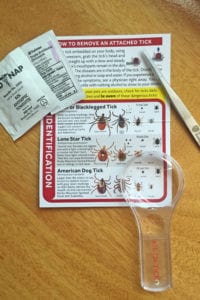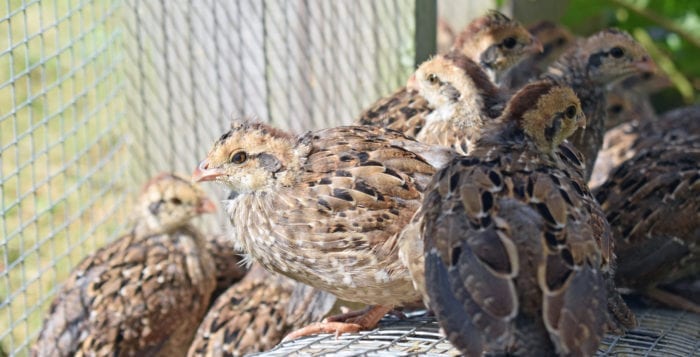Mount Sinai Elementary School fourth-graders are raising quails to help curb the tick population.
As part of a seven-year program, teacher Kevin Walsh works with students to raise a group of 50 bobwhite quails from eggs in a classroom incubator, then transfers them to a large pen located in the corner of the courtyard under heat lamps. The young students watch their project grow before their eyes and learn about the natural process of life.
“We teach the kids about food chains, about ecosystems, predator-prey relationships and the needs that all our creatures have to survive,” Walsh said. “We teach kids how to properly carefor living animals. It carries with them later in life.”

As similar as the quails are to one another, the fourth-graders who raised them said they could be distinguished by their look and personality.
One is named Michael Jackson, another Brittany, Roadrunner, Scooter and Beyoncé. The kids curled their fingers through links in the mesh fence and called the quails by name to see if they would touch their hands.
“They claim they can tell them apart,” said Walsh as he watched them, laughing. “I’m like, ‘Are you sure?’ They all look the same to me.”
The school received the quail eggs in April and watched the quails hatch inside their classroom incubator. By the end of this month, the quails will have reached the size of a grown man’s fist. By the time they are released in July at Brookhaven State Park in Wading River, the teacher said he expects them to double in size.
“Back when I first started last July, one of the first things I saw out here was [Walsh] standing in the courtyard tending to the quails,” said principal Rob Catlin, who is finishing his first year at the helm of the elementary school. “He’s out there seven days a week. In summers and on Memorial Day weekend — he’s coming in to check on them.”
Quails, as birds who stay close the ground, are a natural predator for ticks, whose population has swelled in recent years. If the problem wasn’t already as front and center as it was for Walsh, two years ago he was infected with Lyme disease, and for days was cooped up in his home suffering pains and a fever.
“We teach the kids about food chains, about ecosystems, predator-prey relationships and the needs that all our creatures have to survive.”
— Kevin Walsh
The disease can be debilitating and infectious, and causes severe headaches, joint aches and tiredness, especially if not treated immediately. Left untreated the disease can potentially cause paralysis in the face, heart palpitations and memory issues.
“Luckily I got the meds really quickly, but I haven’t been that sick in a long time,” Walsh said. “I had aches, pains, a high fever and was sweating like crazy. This project has taken on a more personal meaning since then.”
Superintendent Gordon Brosdal said without Walsh there would be no quails.
“It’s near impossible to find a guy as dedicated as Kevin,” Brosdal said.
Walsh recalled moving to the suburbs of Long Island from the city, and how his mother called his father at work, excited to learn their new home came with a flock of chickens. She later learned they were a flock of brown speckled bobwhite quails.
With changing times, Long Island’s quail population has changed, too, seeing a severe decline due to loss of habitat and excess predation.
“The quail like open landscapes – really sunlit areas,” Walsh said. “And a lot of the places left on Long Island are wooded, heavily forested or turned into developed land.”
Local biologist Eric Powers said household cats have also made a huge dent in population.
“It’s pretty simple math — one plus one,” Powers said. “You add cats to an environment and they just decimate the local ground dwelling animal population, particularly the birds.”

Walsh receives his quails every year through a program developed by Powers back in 2002 for the dual purpose of rejuvenating the local quail population while curbing the rising tick problem, which gets worse every year with a lack of natural predators.
The Centers for Disease Control and Prevention reported the number of illnesses related to ticks, mosquitos and fleas have tripled from 2004 to 2016, with 69,313 diseases reported from ticks in New York state in that time. In 2013, the CDC estimated that nationally there were 300,000 cases of Lyme disease annually, which is carried by deer tick.
Brosdal’s daughter Erika suffered through the pains of Lyme disease when she was 13 years old. As a father, watching his daughter lay in pain on the couch was heartbreaking.
“She couldn’t breathe,” Brosdal said. “It affected her so terribly – she was an A-grade student until that happened, and then she had to read everything twice. I give her a lot of credit — she’s 44 now and has two master’s degrees and she’s a high school psychologist.”
Brosdal said the quails have an important job to do and “can do a lot of good.”
Powers said multiple schools participate in his program and will release the quails in parks all over Long Island. If any school or group is interested in raising quails, Powers can be contacted through www.yc2n.com.
_______________________________________________________
Tips and tricks when handling ticks
By Desirée Keegan
According to Stony Brook Southampton Hospital, over 900 calls were received from people seeking advice from its tick helpline in 2017.

If a tick is found on your body, there are ways to safely remove it:
• Tweezers are the best tool and should be placed as close to the skin as possible — grabbing the tick’s head.
• Pull upward with a slow and steady motion and try to avoid breaking the tick in half. If the head snaps off, know disease transmission is not possible without the entire body.
• Disinfect the bit area with rubbing alcohol or soap and water and contact a physician. Consider placing the tick in a baggie or pill vial.
• Pay attention to your health in the weeks following.
There are also ways to reduce your exposure, like checking for ticks daily, especially under the arms, in and around the ears, inside the belly button, behind the knees or between legs and on the hairline and scalp.
Remove and dry clothing on high heat as soon as possible to kill ticks. They can’t be drowned by washing. You can create a tick-safe yard by mowing frequently and keeping leaves raked. Also be sure to treat dogs and cats.
One tick can carry multiple pathogens. Deer ticks or blacklegged ones have no white markings, are brown or black in color and are very, very small. Both nymph and adult stages can transmit diseases like Lyme and babesiosis.
For more information on handling and treating ticks or for a free removal kit visit www.eastendtickresource.org or call the helpline at 631-726-TICK (8425).





